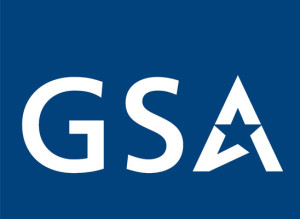
IG says GSA missed out on potentially $1.1B in savings, but is that really the case?
The General Services Administration’s inspector general reviewed new schedule contracts or those being renewed over a three-year period and found the agency m...
The easy headline and story would be about how the General Services Administration is missing out on potentially saving $1.1 billion under the multiple awards schedule program.
The agency’s inspector general released its annual review of 130 pre-award audits of new or renewed schedule contracts. In the report, auditors say they recommended price and discount adjustments that could total huge savings.
“By not effectively using all of the negotiation tools available, contracting officers are failing to leverage the government’s purchasing power,” the report states. “While we recognize that negotiations may not always yield the full amount of cost savings identified in our pre-award audit reports, FAS’ general disregard of pre-award audit results wasted our audit resources and forfeited opportunities to save over $900 million in taxpayer dollars.”
But that would be the easy way to read the audit and write an attention grabbing headline.
The use of pre-award audits and this annual report requires a deeper look into why GSA is “leaving” so much money on the table and causing such a caustic response from the IG.
Experts say that while pre-award audits are helpful, but may not tell the entire story. They say the IG looks mainly at the “list” price of a product or service, but only in a post-award audit can an auditor truly understand what price the agency really paid.
“The potential savings identified in the memorandum arise from an analysis of a single data point. A holistic, end-to-end review of the pricing process would better assess the total acquisition cost, including costs to GSA, the IG, and industry in collecting, organizing, reviewing, and analyzing the pricing and sales information subject to audit,” said Roger Waldron, the president of the Coalition for Government Procurement and a former GSA executive. “The recurring administrative infrastructure costs associated with the schedules audit process also should be considered. For example, according to our estimates, the costs associated with the schedule pricing compliance and reporting requirements cost industry over $1 billion annually. One has to ask whether these administrative costs/burdens reduce access to commercial innovation? I believe the answer is yes.”
Deeper discounts at task order level?
Larry Allen, managing director of the federal market access practice at BDO, said while the IG has an important role to play in conducting pre-award audits, many times the contracting officer or agency customer receives a significant discount off at the task order level.
“A fairer analysis would be to do some digging and see what agencies paid at the task order level to determine to what degree there may have been savings. You can’t assume if you gave that deeper discount at contract level there would be similar discounting at task level. At some point, a discount is a discount,” Allen said. “There could be more accuracy if the IG looked at the prices paid at the task order level because what they are doing is a classic apples-to-oranges comparison. The contract level price is not the price agencies actually pay at the transaction level.”
Read more: Reporter’s Notebook
The IG looked at contracts over a three-year period between 2016 and 2019.
“We reviewed documents for contracts awarded during the review period to determine what contracting officers were using for the basis of their negotiations,” the report states. “We identified numerous instances where contracting officers relied on faulty pricing tools or unverified information, rather than pre-award audit results, to make pricing determinations. For example, on a projected $2.3 billion contract, we found the proposed contract rates were overstated by an average of 31%, but the contracting officer negotiated a mere 1% discount improvement from the proposed rates based on an unsupported price analysis, which negated potential cost savings of $124.7 million. Moreover, we found that FAS accepted the contractor’s proposed pricing on contracts, resulting in $262 million in forfeited savings.”
An IG spokesman disputed the fact that auditors were making an apples-to-oranges comparison.
“Our analysis captures what commercial customers are paying for orders comparable to government task orders and takes into account discounts at the task order level. So the $1.1 billion savings is an estimate of what Schedule customers could actually realize,” the spokesman said. “Moreover, we know that agencies do indeed rely on the schedule price, because the FAR does not require them to negotiate additional discounts until the simplified acquisition threshold of $150,000 is reached.”
At the same time, GSA and the IG have been working together to make improvements to schedule contracts. A GSA official said the Federal Acquisition Service and the IG formed a working group in 2018 to improve the value of pre-award audits. The working group helped develop new policy, established performance metrics that are reviewed quarterly, which led to a 22% improvement in audit timeliness, and more than 2,100 hours of training for the acquisition workforce.
The official added FAS looks forward to continuing to partner with the GSA IG on maximizing effective use of contract audits.
Additionally, the IG conducted a strong majority of the audits — as much as 88% — before the change in policy. And there are another 46 audits conducted during that time period that were not listed in the report and included no cost savings or avoidance recommendations.
The GSA official also said FAS uses the pre-award audits regularly to save money, including 54% of the audits identified in the report that led to a recovery of $8 million.
Time to complete audit takes too long
Allen said the IG’s timing around doing the audits and getting the results to contracting officers also causes challenges.
He said many times contracting officers receive the pre-award audits after signing the schedule contract because waiting for the analysis was taking too long.
“There have been a number of anecdotal cases where audits were completed after the award has been made,” Allen said. “The issue is audits need to be done in a timely manner, and are only useful before the award is made. The IG wants to reopen negotiations, and the company isn’t excited about it.”
Read more: Acquisition News
A GSA official confirmed that IG audits took longer than expected. In fiscal 2019, the official said IG office took, on average, 483 days to conduct an audit , which left contracting officers without adequate time to negotiate with schedule vendors and that effected the ability of customer agencies to procure goods and services.
Another big problem with the reviews is a potential conflict of interest that comes with these audits.
“During my career at GSA, I worked closely with the IG, and I appreciate its oversight role as a key feature of our system. It promotes accountability and stewardship of the public fisc,” Waldron said. “Here, however, the memorandum highlights an issue observed by stakeholders across the procurement community, namely, that the IG is providing operational support to contracting officers on the front end and oversight reviews of the contacting process on the back end. It is an apparent organizational conflict of interest because the IG is reviewing transactions/fact patterns in which it was a directly involved at the outset. Under the Federal Acquisition Regulations, the government would prohibit a vendor from performing these conflicting roles.”
DoD could be a good example
A good example of this separation of duties is at the Defense Department where the Defense Contract Audit Agency performs reviews and the inspector general offers opinions and recommendations based those and other analyses.
It would make sense for GSA and its IG to create either a similar model or focus more on task order level audits to get a better sense of the real and potential savings the schedules bring to the market.
Two recent studies found agencies are paying less through the schedules than through commercial sites.
The CGP analyzed 744 AbilityOne products on GSA Advantage and on a platform run by Amazon under a pilot program. CGP found 741 out of 744 items on GSA Advantage had better prices as compared to the AbilityOne and Amazon site. Even when CGP accounted for minimum order quantities required under the government’s buying platform, GSA Advantage still provides agencies with a better deal 72% of the time and prices were lower 56% lower on Advantage as compared to the Amazon pilot.
The December 2017 study by Air Force Capts. Holland Canter and Tabitha Gomez at the Naval Postgraduate School provided similar findings as the CGP report.
Canter and Gomez looked at an Air Force pilot with Amazon and GSA Advantage for credit card purchases.
Canter and Gomez found “of 300 vendors that offered the 60 compared items, GSA Advantage offered the lowest price 80 percent of the time (241 times out of 300). Although GSA Advantage offered the lowest price more frequently, every item had a minimum order requirement. Amazon Business did not have any stated minimum order requirements for any items that we examined.”
Seems like the IG has a good model to follow for future evaluations of what agencies pay for schedule products and services.
Copyright © 2024 Federal News Network. All rights reserved. This website is not intended for users located within the European Economic Area.
Jason Miller is executive editor of Federal News Network and directs news coverage on the people, policy and programs of the federal government.
Follow @jmillerWFED
Related Stories





